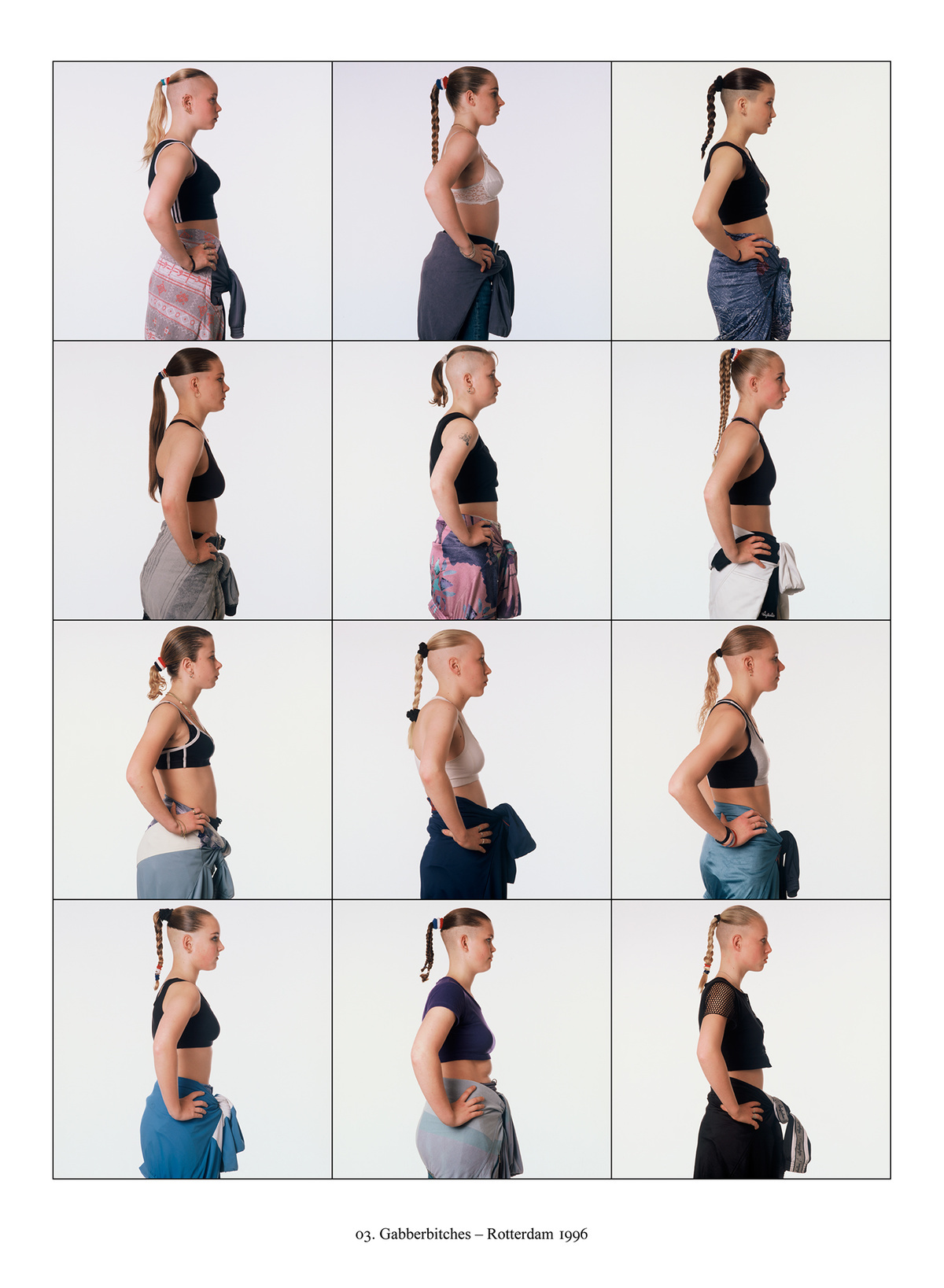Ari and Ellie were initially inspired by “the whole gabba thing in Rotterdam”- picture a dozy looking lad with a number one buzz cut, wearing a shell suit. “We saw so many of the same clones that it was like the whole city was invaded.” After that, the Dutch duo started observing people and their social uniforms and when they found enough of the same to fill a 3 x 4 contact sheet, they invited the mini-tribes into their studio and click clicked. Ergo twelve girls in tracksuits with over-plucked eyebrows; twelve auntie Sheila’s – you know the sort; twelve grown-up tatted emos in snapbacks; and twelve gabbabitches in sports bras with half-shaved heads. It’s like how some people will always say, “we’re packed in here like sardines” in any given crowd, and others will roll their eyes. Most people fit a type, even if it’s an atypical one. We’re more like one in 400 than one in a million, and right now there are probably eleven other people dressed exactly like you, and one day Exactitudes will get you!
A seriously original collection of culture, Exactitudes has received its share or less of media coverage: i-D featured its creators in 2003, and 2005, and we saw them again at the Architecture Biennale in Venice, 2012. Laid out here are some of our favourites from their archive, as well as one brand new work: the grown-up emos.
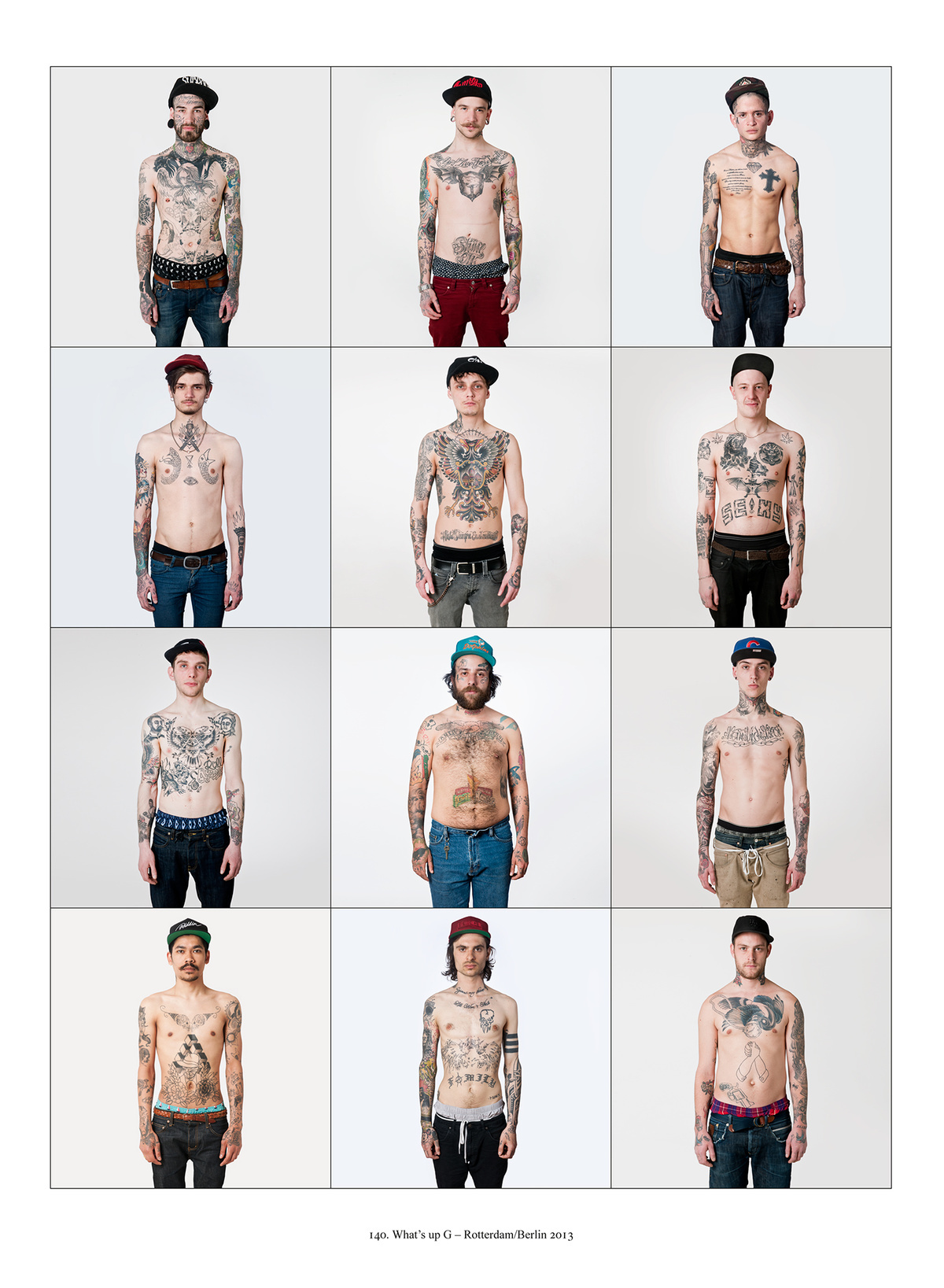
Where do you go to find style tribes?
We simply focus on what we ourselves like to document: style and identity. When we work outside of Rotterdam, the new Exactitudes are always a product of intense observation, discussion and encounters, for a set period in a certain place. We aim to avoid short trends. A new series, a new tribe, should always make sense to the bigger story we like to tell. Recently new Exactitudes have been made in The Hague, (inspired by Dutch colonial heritage), Berlin (new skool tats) and St Petersburg (up-to-date high street kids).
Does a subculture start with one person?
We concentrate on uniformed identity, a blurring of difference, deliberate or not; individuals desire to merge, and at the same time feel individualistic. Over the age of 40, most older people stick to a certain style and have a rather fixed idea of who they are and what they want to represent. New styles and identities are fed by fashion, mass media, film, social media and especially cross-pollination between different cultures, genders and age.
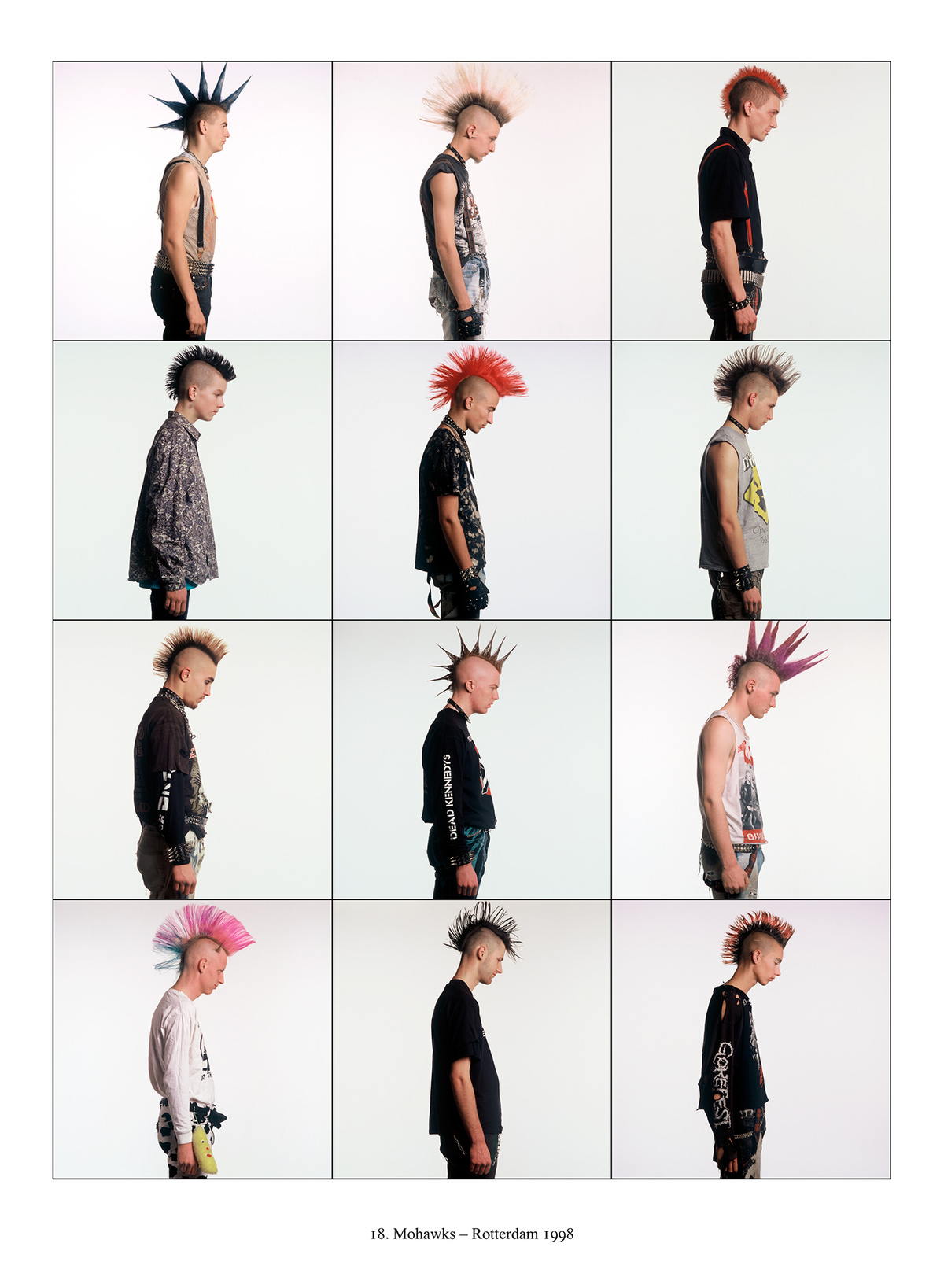
Are there any styles or subcultures that you have wanted to photograph but couldn’t?
Extremely religious [groups] are hard to portray. It takes an investigative journalism approach to convince them to have their picture taken in a studio. Young Muslim guys with non-branded Western sneakers and sport jackets; Orthodox Jewish youngsters in Antwerp with pipe curls… They take a very serious approach and you have to be very determined. Exactitudes is about the encounter and a willingness to co-operate, for the right photo to be taken.
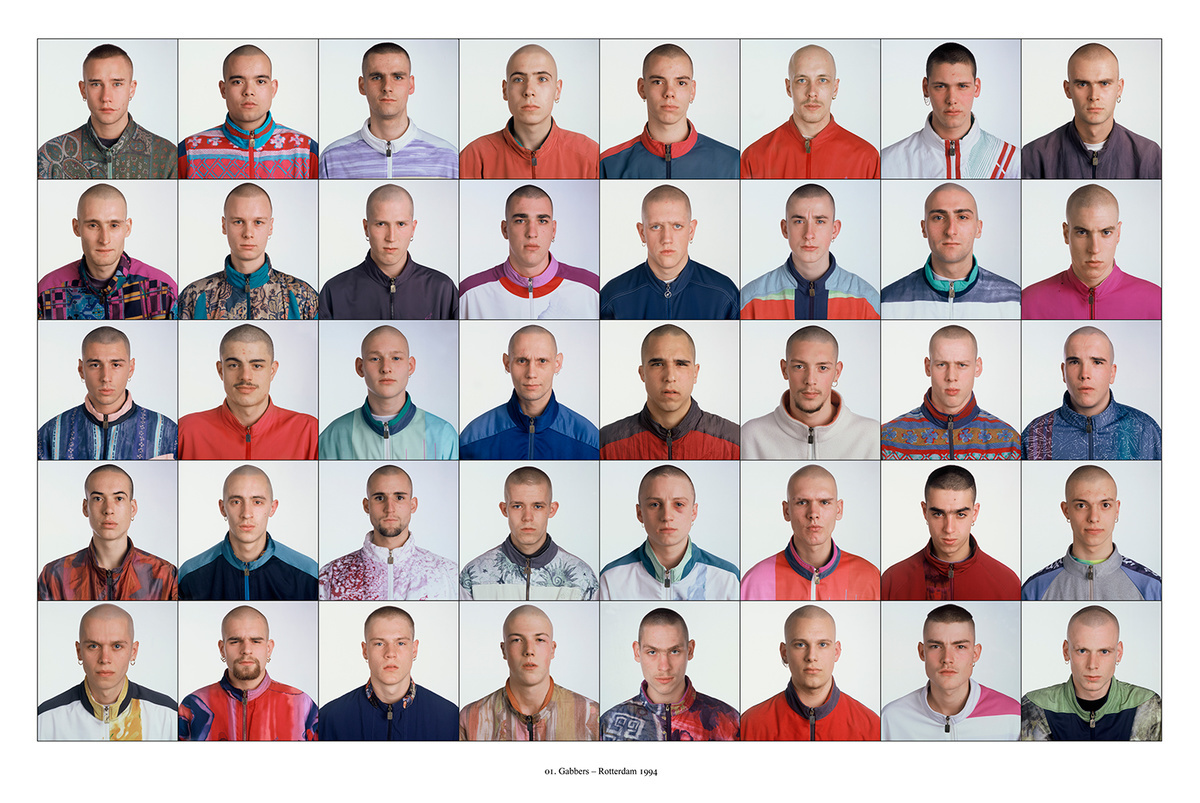
Do you think a style, like punk or goth or skinhead, is a true representation of the person who wears it, and of their attitudes?
At that exact moment in their life, YES!
Do subcultures still exist? Has inspiration for the project become harder to find?
Subcultures do exist, but they’re not that obvious anymore. In terms of fashion and lifestyle we have experienced a massive globalisation – democratisation of fashion, so people say. But it takes the edge off of practically anything new and leaves less space for real experimentation. Understanding the bigger social and political picture, on the other hand, can lead you to newer, smaller and more specific groups.
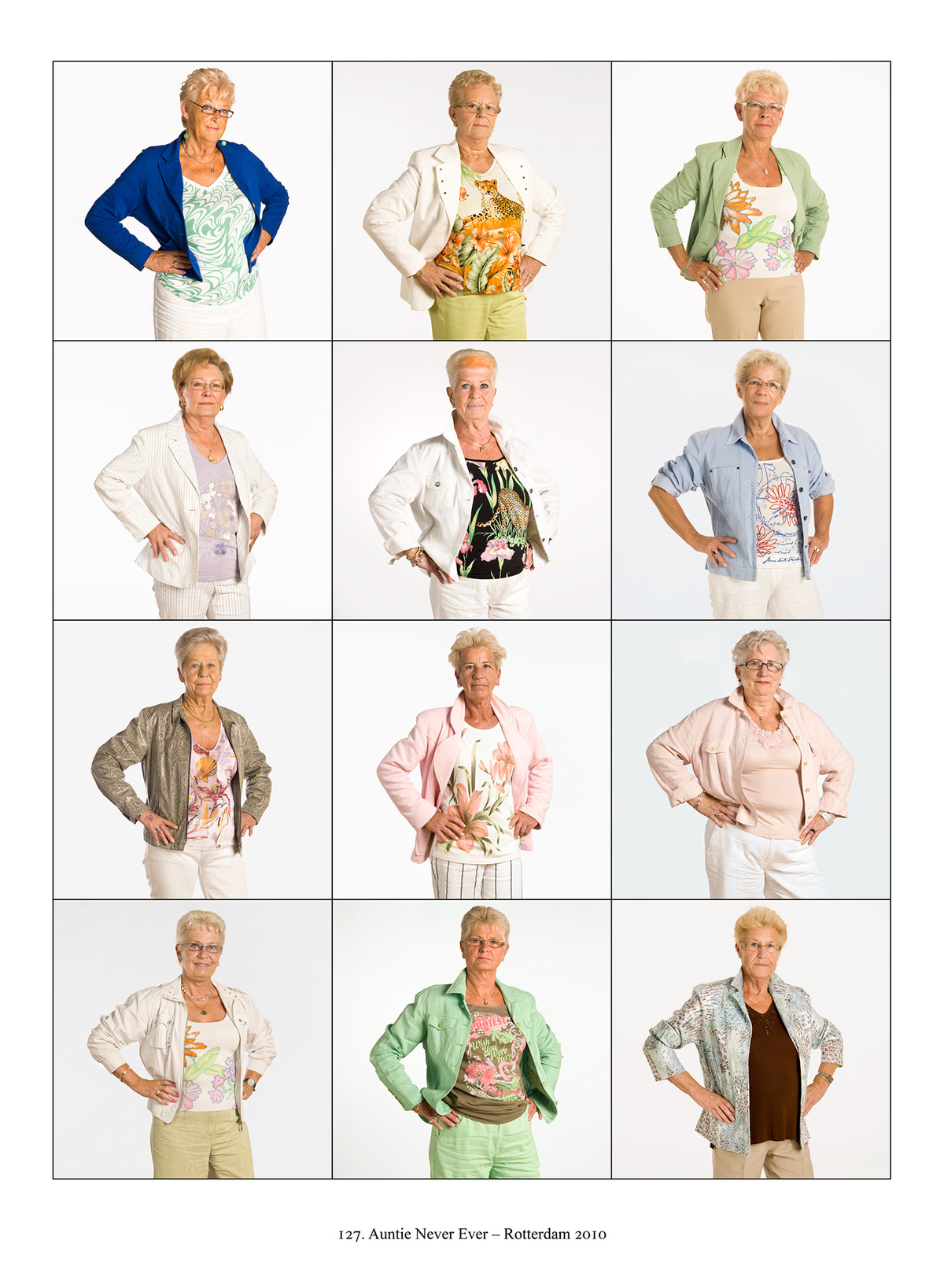
Do you collect anything else?
Collecting is fun and addictive, but having too much stuff is frustrating and dusty. Nowadays we love the “Cloud” feeling, and we tend to embrace a more non-materialistic approach to life. However, more of the same is still mighty attractive, especially when it is like our Exactitudes work, a never-ending story. And we collect i-D mags, from the first issue until now. Really.
What do you wear?
And what does it say about you? People don’t change, but fashion does. So our personal style is a clean-cut look with ditto short hairdos. Can’t escape the cyclical power of fashion. Styling is about the essential details, it’s not the what but the how!
flatlandgallery.com
exactitudes.com
Credits
Text Sarah Raphael
Images Ari Versluis and Ellie Uyttenbroek
